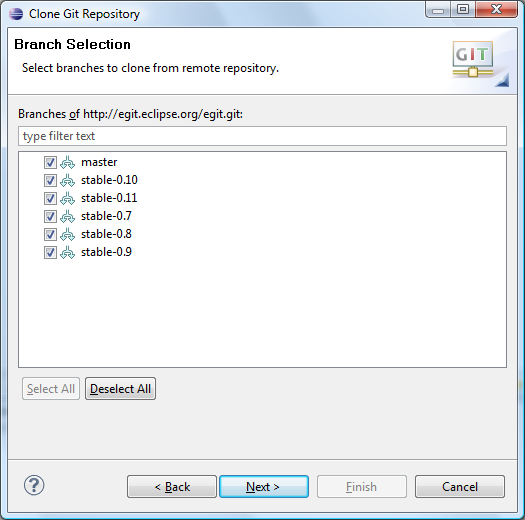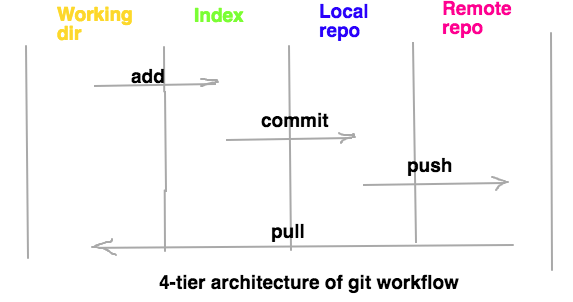

- #Git create branch tracking remote update
- #Git create branch tracking remote full
- #Git create branch tracking remote series
Select Push to push your changes to a new branch on the remote repository and set the upstream branch.

Push your changes to a new branch on the origin remote and set the upstream branch. As it was already mentioned, the git checkout command allows switching between. Select Push to share your commit with the remote repository.ĭuring your first push to the repository, you'll see the following message in place of the outgoing commits list: The current branch does not track a remote branch. The tracking will be set up by Git during the pushing. You can also go to Synchronization from the Changes view by choosing Sync immediately after making a commit.
#Git create branch tracking remote update
In Team Explorer, select Home and then choose Sync to open Synchronization. Fetch changes from the remote, but not update tracking branches. To learn more, see Side-by-side comparison of Git and Team Explorer. Procedures provided in this article under the Visual Studio 2019 tab provide information for using the Git experience as well as Team Explorer. HTTP is an easy way to allow anonymous, read-only access to a repository.Visual Studio 2019 version 16.8 and later versions provide a new Git menu for managing the Git workflow with less context switching than Team Explorer.

Git: List All Remote Branches Using git remote show. » MORE: Error: Failed To Push Some Refs To Remote. Remote branches are denoted by the remotes label. git branch -a returns remote tracking branches and local branches. Two of the easiest ways to access a remote repo are via the HTTP and the SSH protocols. This is because git branch -r only returns remote branches.

Git supports many ways to reference a remote repository. This behavior is also why most Git-based projects call their central repository origin. This is useful for developers creating a local copy of a central repository, since it provides an easy way to pull upstream changes or publish local commits. When you clone a repository with git clone, it automatically creates a remote connection called origin pointing back to the cloned repository. The git remote command is really just an easier way to pass URLs to these "sharing" commands. Instead, developers need to manually pull upstream commits into their local repository or manually push their local commits back up to the central repository. This means that information is not automatically passed back and forth between repositories. Git is designed to give each developer an entirely isolated development environment. Rename a remote connection from <old-name> to <new-name>. The following commands are used to view the current state of the remote list. The git remote command is essentially an interface for managing a list of remote entries that are stored in the repository's.
#Git create branch tracking remote full
Instead of referencing them by their full URLs, you can pass the origin and john shortcuts to other Git commands. Instead of providing real-time access to another repository, they serve as convenient names that can be used to reference a not-so-convenient URL.įor example, the following diagram shows two remote connections from your repo into the central repo and another developer’s repo. Remote connections are more like bookmarks rather than direct links into other repositories. You have already read about one way to establish such a tracking connection: using git push with the -u option when publishing a local branch for the first time does exactly that. The git remote command lets you create, view, and delete connections to other repositories. The tracking connection helps Git fill in the blanks which branch on which remote you want to push to, for example. These commands all have their own syncing responsibilities which can be explored on the corresponding links. Records registered through the git remote command are used in conjunction with the git fetch, git push, and git pull commands. The git remote command is one piece of the broader system which is responsible for syncing changes. Instead of committing a changeset from a working copy to the central repository, Git lets you share entire branches between repositories.
#Git create branch tracking remote series
Users typically need to share a series of commits rather than a single changeset. This is different from Git's distributed collaboration model, which gives every developer their own copy of the repository, complete with its own local history and branch structure. SVN uses a single centralized repository to serve as the communication hub for developers, and collaboration takes place by passing changesets between the developers’ working copies and the central repository.


 0 kommentar(er)
0 kommentar(er)
